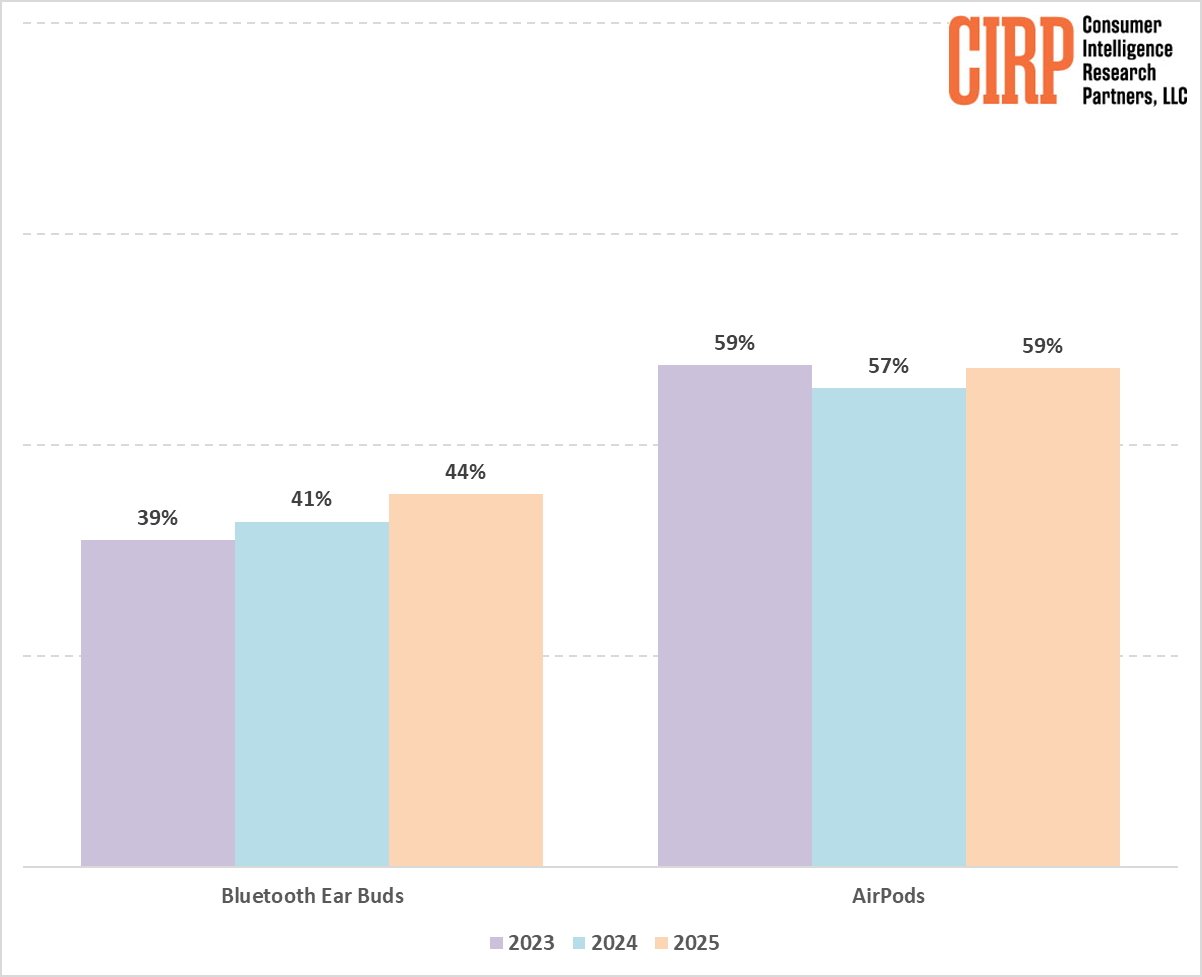AirPods have become one of Apple’s biggest accessory hits, but the company faces the tough challenge of driving repeat sales in a market that’s showing signs of fatigue.
A Consumer Intelligence Research Partners (CIRP) report claims about 40% of iPhone owners use Bluetooth earbuds, with roughly 60% of them choosing AirPods. That equates to about 25% of iPhone users overall.
While a quarter of Apple’s massive installed base is nothing to dismiss, it’s also not the kind of saturation that guarantees easy future growth.
Apple is expected to introduce a new AirPods 2025 generation in September. But discount-heavy sales and slowing AirPods market share trends suggest challenges ahead that analysis glosses over.
Steep discounts raise questions about demand
Amazon’s July Prime Day featured a $100 discount on AirPods Pro 2. Best Buy and Walmart matched the price cut. The price dropped from $249 to $149, which is rare for a premium Apple product.
CIRP suggests Apple may have used these Amazon Prime Day AirPods discounts simply to “sell a lot of AirPods” because of its strong supply chain. That explanation downplays an obvious question.
Why would Apple, famously strict about margins and pricing, allow third-party retailers to slash prices so deeply if demand were healthy? A more plausible reading is that Apple sees sales momentum slowing.
The company may be willing to sacrifice margin to pull in more users before launching new models. Apple didn’t discount AirPods on its own channels.

Bluetooth headset use and AirPods share among iPhone buyers for the 12 months ending March 2025. Image credit: CIRP
That signals it wants to maintain its brand value and avoid training customers to expect lower prices. Apple can target price-sensitive buyers through third parties without officially cheapening its own premium image.
Shorter replacement cycles aren’t a growth guarantee
CIRP contends that as iPhone users upgrade their phones less frequently, Apple can depend on AirPods to bridge the revenue gap. The replacement cycle for AirPods is shorter compared to iPhones.
Batteries tend to wear out, and people often lose one of the earbuds. Consequently, replacements for AirPods are more common.
But that also exposes a weakness. Customers recognize that AirPods have limited battery longevity and are difficult to repair or recycle.
Apple’s promise to lead in sustainability conflicts with a business model reliant on near-disposable accessories. Critics have already pointed to AirPods sustainability as an e-waste problem Apple has yet to seriously solve.
While replacements generate revenue, they don’t expand Apple’s base of new AirPods users. About a quarter of iPhone owners already have AirPods.
Overall Bluetooth earbud growth is slowing. Apple can’t rely on replacements alone to deliver meaningful unit growth.
Competitive pressures and pricing risks
Apple also faces competition. Samsung, Sony, Bose, and many budget brands offer alternatives that undercut AirPods on price. Some rivals deliver better repairability or longer battery life.
The company’s brand loyalty remains strong. Even among iPhone users, budget options are gaining ground.
Apple’s next AirPods generation will need to deliver genuine improvements if it hopes to grow share among iPhone owners who haven’t yet bought in. That could include better battery life, health tracking, improved sound quality, or deeper integration with Apple’s services ecosystem.

